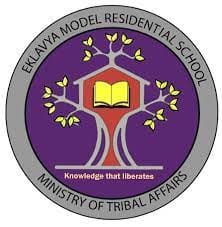Mathematics |
- Natural numbers, Whole numbers, Rational numbers.
- Integer, parentheses, the least common multiple and the greatest common factor.
- Square root, cube root, identities.
- Algebra, Concept - variable numbers, constant numbers, powers of variable numbers.
- Add, subtract, algebraic expressions. Concepts of Gnas and divisions, coefficients of terms and terms of algebraic expressions, homogeneous and homogeneous terms, degrees of expressions, one, two and tripartite expressions
- Simultaneous equations, square equations, linear equations.
- Parallel lines, quadrilateral compositions, triangles.
- Circles and cyclic quadrants, tangent lines of the circle.
- Ratio, Proportion, Percentage, Profit - Loss, Simple Interest, Compound Interest.
- Statistics - classification of data, pictograph, mean, median and polymer, frequency.
- Pie and punishment chart, picture of unclassified data.
- Probability (probability) graph, penalty, diagram and mixed penalty diagram.
- The cartesian plane, mensuration, exponent, trigonometry.
|
Science |
- Science, important discoveries, importance, anthropology and technology in daily life.
- Fibres and textiles, from fibres to textiles. (process)
- Living, non-living matter - fauna, classification of living organisms, classification of plants and fauna based on animals and flora, the adaptation of organisms, changes in animals and plants. - The structure and function of animals.
- Microorganisms and their classification. - From cell to the organ.
- Adolescence, development.
- Food, health, hygiene and disease, crop production, nitrogen cycle.
- Nutrition in animals, nutrition in plants, reproduction, beneficial plants. - Respiration, excretion, beneficial animals in organisms.
- Measurement, electric current, magnetism, speed, force and instruments.
- Energy, sound, static electricity, light and light instruments.
- Air - properties, composition, necessity, utility, ozone layer, greenhouse effect.
- Water - need, utility, source, quality, pollution, water conservation.
- Matter, groups of substances, separation of substances, structure and nature of matter.
- Acids, Bases and Salts.
- Heat and heat
- Man-made goods, plastic, glass, soap, dead.
- Minerals and metals, carbon and its compounds.
- Alternative sources of energy.
- Periodic table, blood composition, class and precautions in blood exchange.
|
Educational Management and Administration [Second Question Paper (For Headmaster)] |
- Meaning, necessity and importance of school management.
- Areas of school management.
- Management of physical resources (school buildings, furniture, educational equipment, furnishings, drinking water, toilets).
- Management of human resources (Teachers, Children, Community-Village Education Committee, School Management Committee, Teacher Parents Association, Mother Teachers Association, Women's Motivational Team)
- Financial management (school grant, TLM grant, money received from the community from the school, money earned from school property, grant from the Gram Panchayat fund / from public representatives)
- Educational Management (Classroom Management, Teaching Learning Materials Management, Learning, Corner and Library Management.).
- Time Management: Construction and use of timetables. Role of various reagents in school management.
- Various agencies involved in the development of elementary education and their role.
- Agencies working at national / state / district / local level.
- The basic structure of primary education.
- Disaster management.
|





